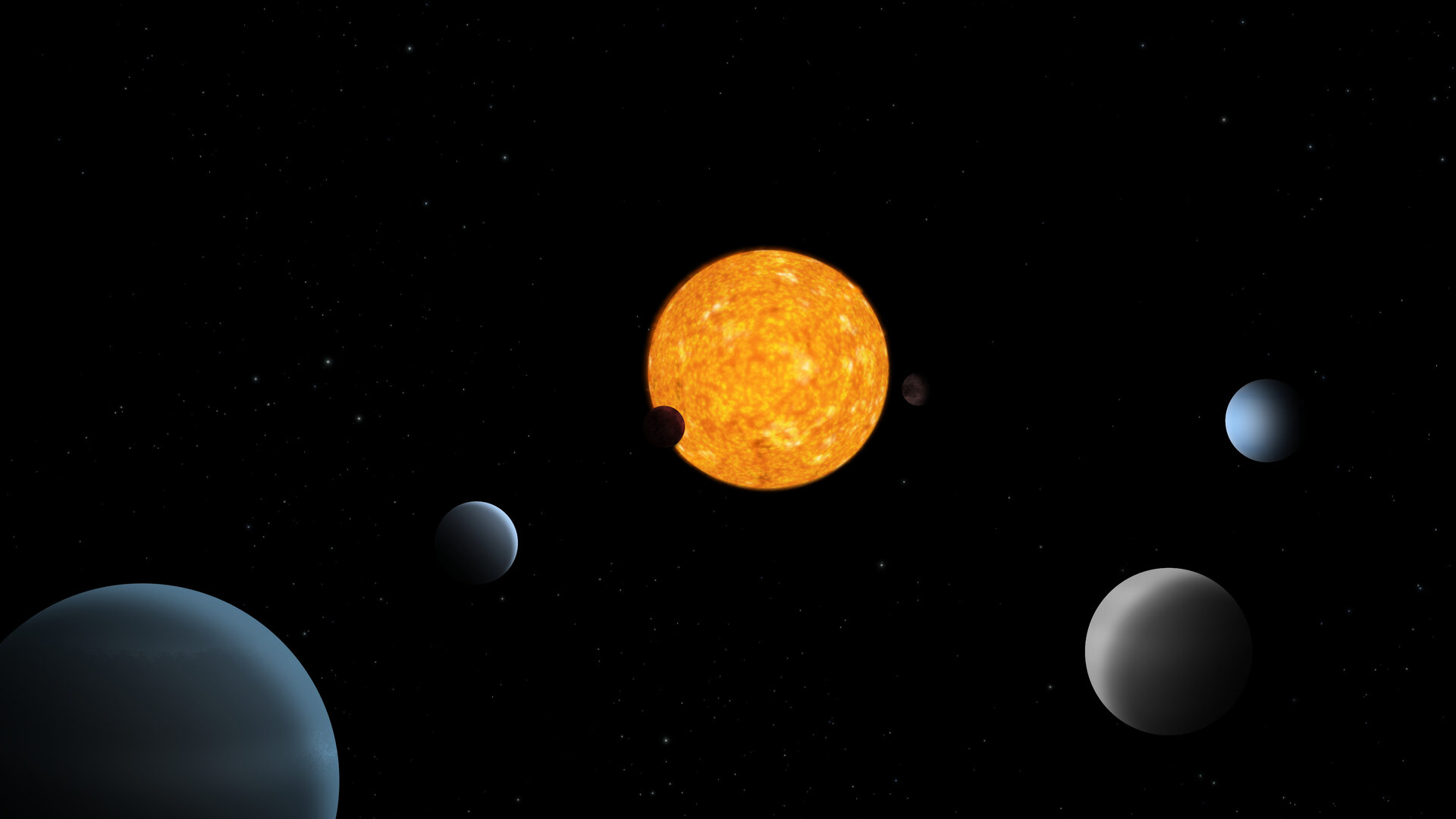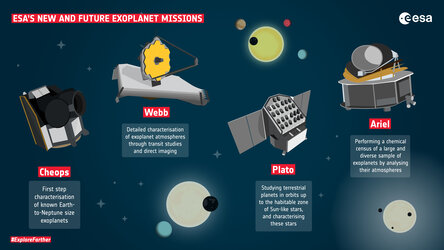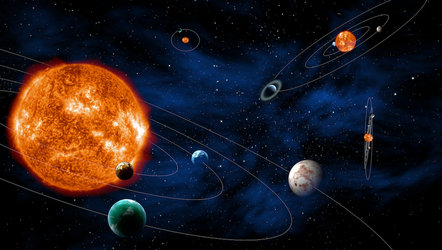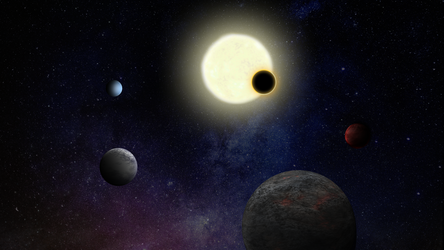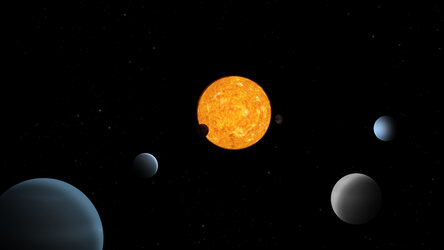Exoplanets in the spotlight
With more than 5000 known exoplanets, it has become crystal clear there is no such thing as an ordinary planet. Find here an overview of the most extreme and unconventional amongst them.
The first exoplanet around a Sun-like star
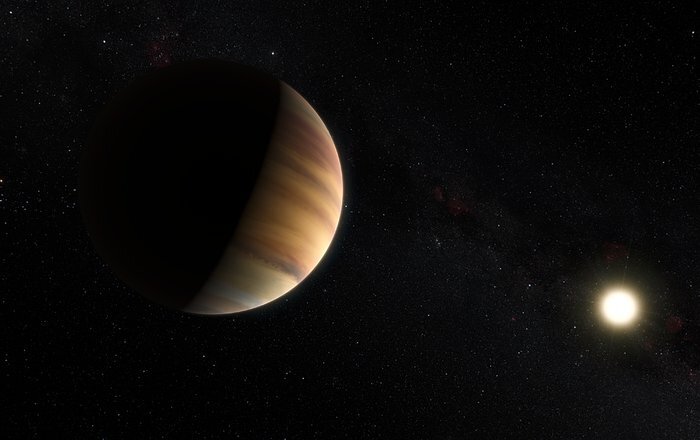
The domain of exoplanets was officially born with the detection of 51 Pegasi b in 1995 by scientists Michel Mayor and Didier Queloz, who won the Nobel prize in 2019 for this discovery. The planet weighing half the mass of Jupiter, orbits its star in a close orbit in just over four days, making it the very first ‘hot Jupiter’. The discovery rocked the astronomical world as its characteristics did not fit into the theory of planetary formation at the time. The planet is tidally locked to its star, so it always shows the same side to its star. In 2017, astronomers discovered the presence of water particles in its atmosphere.
First to transit and first exoplanet atmosphere
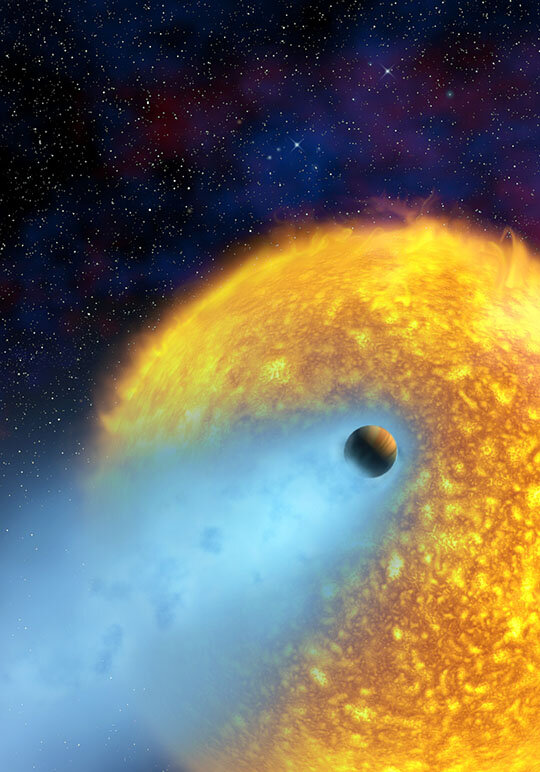
The first planet discovered using the transit method was HD 209458 b in 1999. Interestingly, it was also the first planet whose atmosphere was studied. When a planet transits its star, part of the starlight is absorbed by particles in the atmosphere. The NASA/ESA Hubble Space Telescope became the first satellite to ever measure the composition of an atmosphere of an exoplanet. HD 209458 b is a popular target for space missions, being also revisited by ESA’s Cheops mission in 2020. Using data from this visit, scientists discovered that the planet has a dark outlook and no clouds in its atmosphere.
The first ever photographed
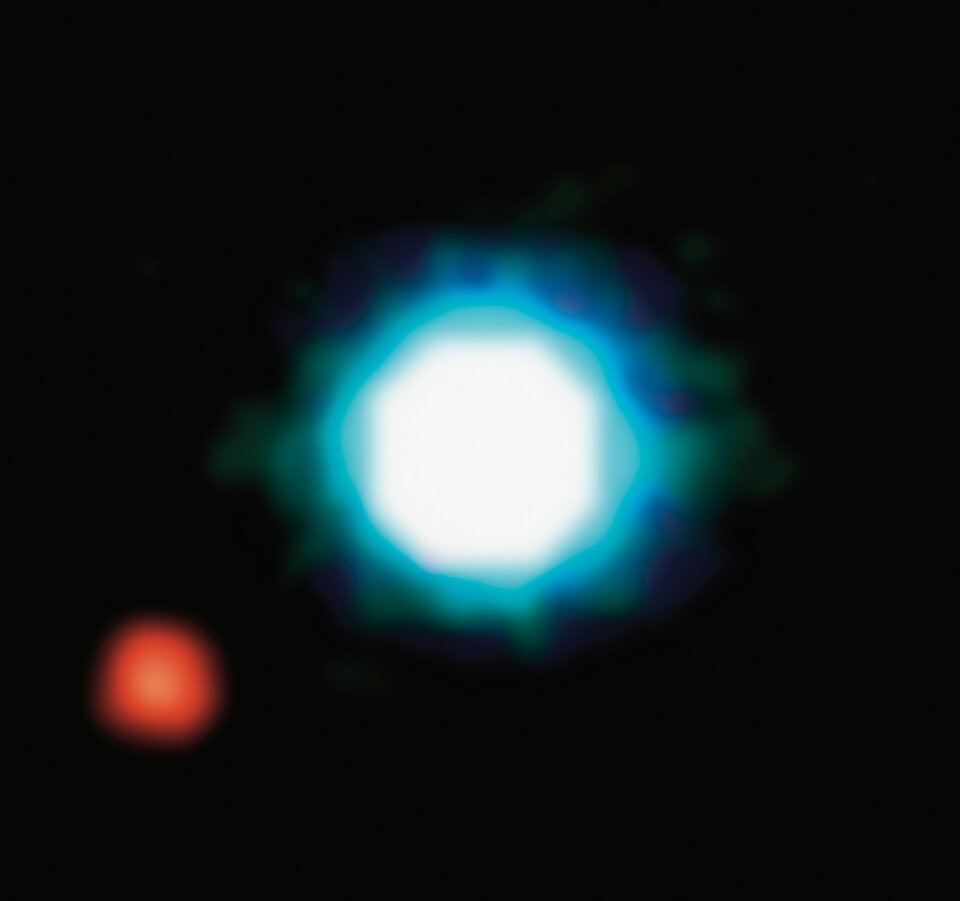
A convincing way of detecting new exoplanets is directly imaging them. The first planet to have shown its face to us is 2M1207b. This planet has 5 times the mass of Jupiter and orbits a brown dwarf at about 55 times the distance from Earth to the Sun. A large planet moving around its star in a big orbit is the ideal candidate to image directly. The system was imaged by the European Southern Observatory’s Very Large Telescope in 2004. Multiple planets have since been imaged by other telescopes such as the Hubble Space Telescope.
A planet orbiting two stars
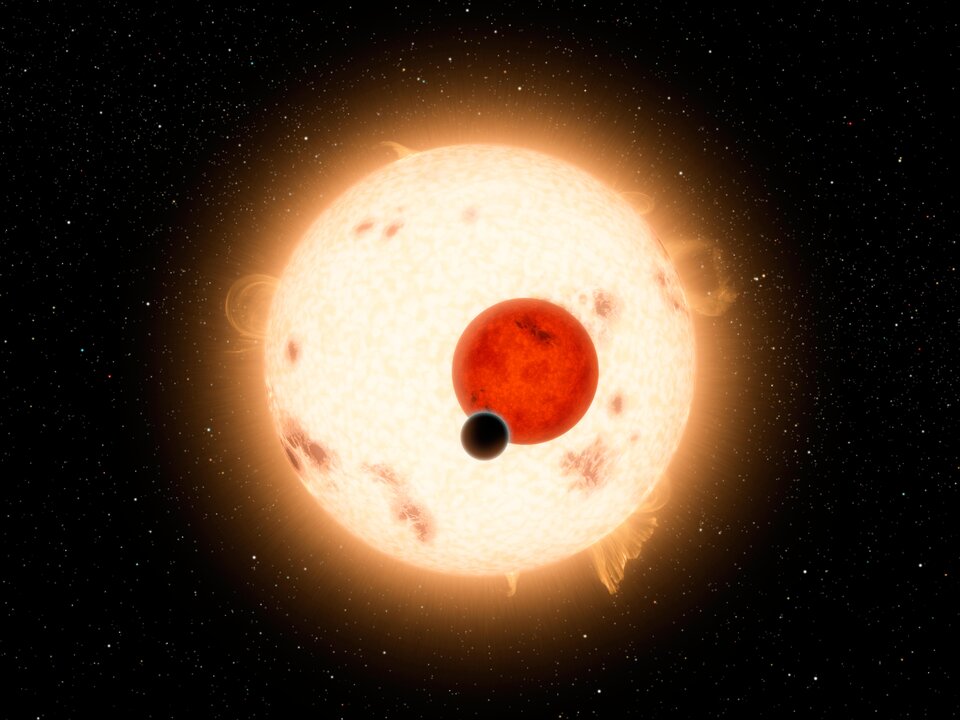
Some planets orbit not only one but two stars. The first planet discovered to do so was Kepler 16b, detected by NASA’s Kepler mission. This planet orbits a pair of stars, both are smaller and lighter than our Sun but one significantly smaller than the other. The planet is of a gaseous nature and slightly smaller than Saturn.
A rugby ball-shaped planet
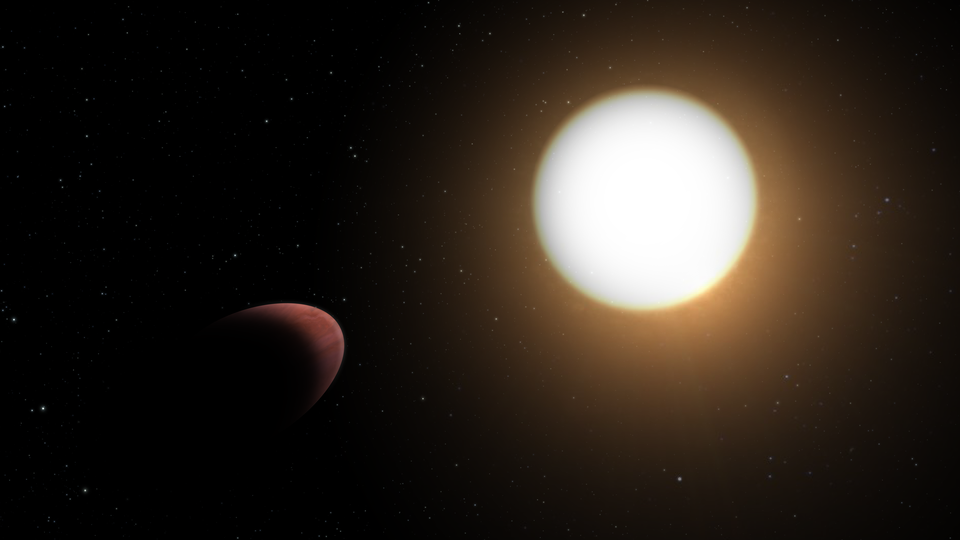
WASP-103b is twice the size of Jupiter with 1.5 times its mass and orbits its star in less than a day. The star has such a sufficiently gravitational influence on its planet that its shape is deformed by tidal interaction into an elongated rugby ball-shape. The shape of this exoplanet was discovered using observations by ESA’s exoplanet mission Cheops. Interestingly, the planet seems to move further away from its star over time.
First terrestrial planet
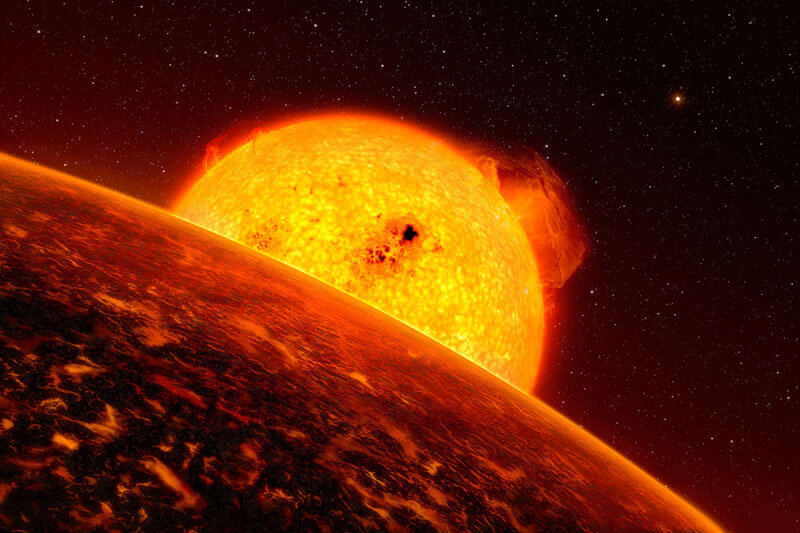
CoRoT-7b is the first terrestrial planet discovered in 2009 by ESA’s Corot mission. But CoRoT-7b is nothing like Earth. Its oceans are made of lava, and even though the planet is only 50 percent bigger than Earth, it is six times as heavy. This planet knows huge differences between its hot dayside, always pointing towards its star and the bitter cold nightside. No atmosphere has been found to date and thus heat cannot easily be transported from its day to its nightside.
The first sign of carbon dioxide
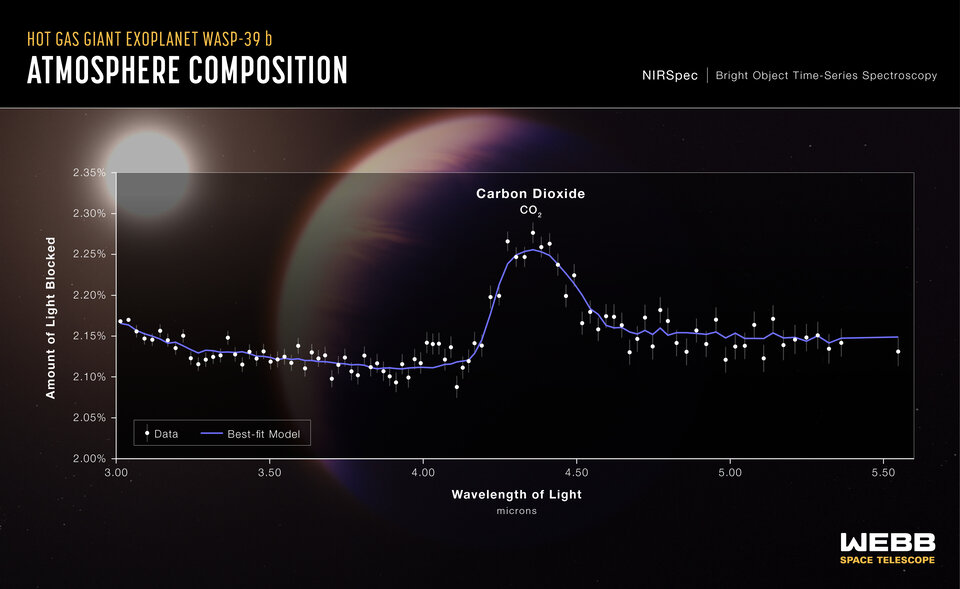
The launch of the NASA/ESA/CSA James Webb Space Telescope marks the start of an acceleration in the field of exoplanetary atmospheres. James Webb measured the atmosphere of WASP-39 b in never-before-seen detail, revealing the presence of carbon dioxide on this puffy gas giant. This was the first ever indisputable evidence for carbon dioxide on a planet outside our Solar system. An important moment because carbon dioxide helps tell the story of how planets form.
First planets orbiting a pulsar
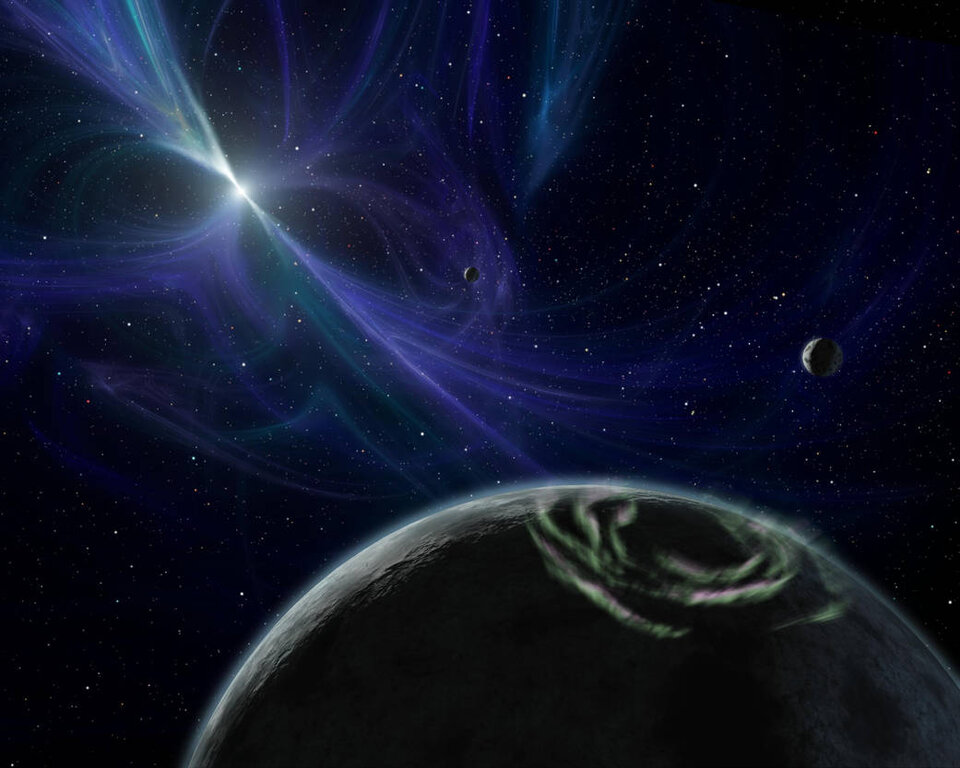
Scientists discovered two planets orbiting the pulsar PSR B1257+12 in 1992, t A pulsar is a highly magnetised rotating neutron star, a massive dead star with a typical size of only about 20 km. Pulsars emit strong electromagnetic radiation from their poles. Just like a lighthouse, we only see the beam when it is pointed at us. The rotation time of such a star is very precise but when scientists measured the time between beams for PSR B1257+12 they found a deviation, which they linked to the presence of two planets around the star. Later, a third planet was discovered.
A ‘dancing’ planetary system

Various multiple planetary systems have now been discovered and just like planets, they come in all kinds of forms. A special system is that around the star TOI-178 where 5 out of the 6 planets have synced up to create a spectacle. The planets move in a 18:9:6:4:3 rhythm, meaning that the first planet makes 18 orbits in the same time the second one makes 9, and so on. For an onlooking observer the planets seem to align with very regular intervals, dancing around their star. The system was characterized by ESA’s Cheops satellite.


